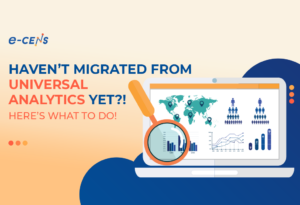Creating and executing a data-driven marketing program is an easy concept to agree with. Who would disagree? How could anyone disagree? This is what we’ve been reading about, hearing and believing for years. We all know that if we can successfully use data to inform marketing we will improve the experience of our customers, and ultimately the bottom line of our organizations. “Data-driven marketing” is to business as “the flag, motherhood and apple pie” is to American culture.
But beyond that general agreement, things get a bit messy.
There are many data, analytics, and marketing platforms that you can use to build your Martech stack and power your data-driven marketing program – even within the same technology vendor ecosystem. As one of Google’s leading partners in the analytics space, we live this every day. We actively work with our clients to help them realize the opportunities that come with using data to create personalized, omnichannel journeys that both please their customers and increase revenue.
But we also know there is no one “right” way to accomplish the goal of data-driven marketing. So, when we sit down for an internal strategy session after meeting with a client, it can definitely be a “how many analysts does it take to come up with the most creative way to use data” scenario. There are multiple “right” answers.
While tactics may vary, in our opinion, there are basically two approaches that you can take to be proactive about using data to drive your marketing program.
The Technology Approach
The biggest advantage of this method is that you can demonstrate success in a relatively short time frame. How? You consider how to maximize the value of your existing marketing technology platforms.
One example: if your organization is using SalesForce Marketing Cloud for marketing automation and email marketing, and also using Google’s Analytics 360 for analytics, you can integrate the data from those two platforms. This enables you to personalize email from SalesForce based on the segments created through Google Analytics behavioral analysis.
The result: increased volume of high-quality leads and a boost in sales.
The Strategic Approach
If your organization is taking a tactical or siloed approach to applying data and analytics to digital and omnichannel marketing, you may want to consider how to use data to plan strategy and tactics across the enterprise.
The results of such a strategy can provide clarity for investment, cooperation, and commitment from executive sponsors and supporting stakeholders. This can lead to a roadmap that renders what is required to:
- architect and build an analytics tech stack that integrates with your digital Martech ad stack
- plan and evolve your marketing analytics platform
- create data standards and governance for digital marketing data integration, quality assurance, and usage
- define KPIs, metrics, and benchmarks for a unified approach to developing insights that drive revenue generating marketing tactics
And just to be loud and clear on this… one approach isn’t necessarily better than the other. The best approach is whichever happens to work best for your organization. We know that there can be a lot of dependencies – technical, political, financial and so forth. The important thing is that you do what you can to keep “moving the ball forward.”
The approach is less important than the results and how you build on them
Regardless of your approach to using data to inform marketing, we see that successful digital marketing leaders are always using success as building blocks to support more investment into their programs. They unfailingly demonstrate and communicate the value of their programs with the data that they are collecting. Not only to show a return on investment, but also show how their efforts are building towards a much larger marketing program. One that uses data as a foundation for themes such as:
- Using a data-driven marketing strategy that is grounded in customer research and testing, and fueled by advanced analysis techniques and machine learning technologies.
- Cracking the code of customer experience improvement by working to develop a single view of the customer.
- Trusting data through diligent governance and management of digital data as a distinct and critical data set for use in marketing, advertising, customer experience, and personalization.
- Evolving and improving the marketing analytics engine, continually improving how data, analytics, and insights are managed – and how they are applied to marketing, communication, and product development initiatives.
Clearly, there’s a lot to talk about! I look forward to hearing your thoughts and approaches.

This post was originally written by
Feras Alhlou
President & Co-Founder, e-nor





